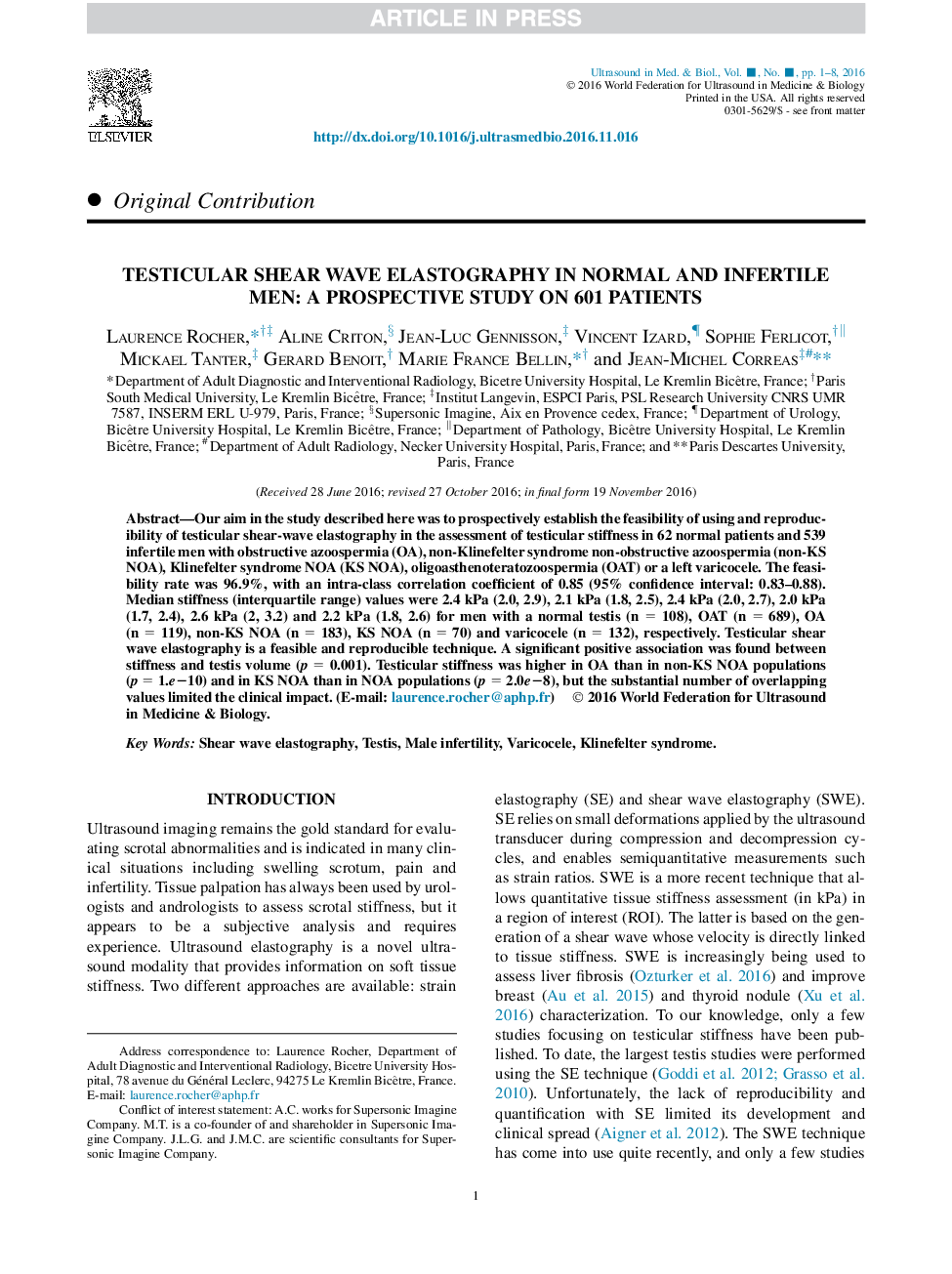| Article ID | Journal | Published Year | Pages | File Type |
|---|---|---|---|---|
| 5485977 | Ultrasound in Medicine & Biology | 2017 | 8 Pages |
Abstract
Our aim in the study described here was to prospectively establish the feasibility of using and reproducibility of testicular shear-wave elastography in the assessment of testicular stiffness in 62 normal patients and 539 infertile men with obstructive azoospermia (OA), non-Klinefelter syndrome non-obstructive azoospermia (non-KS NOA), Klinefelter syndrome NOA (KS NOA), oligoasthenoteratozoospermia (OAT) or a left varicocele. The feasibility rate was 96.9%, with an intra-class correlation coefficient of 0.85 (95% confidence interval: 0.83-0.88). Median stiffness (interquartile range) values were 2.4 kPa (2.0, 2.9), 2.1 kPa (1.8, 2.5), 2.4 kPa (2.0, 2.7), 2.0 kPa (1.7, 2.4), 2.6 kPa (2, 3.2) and 2.2 kPa (1.8, 2.6) for men with a normal testis (n = 108), OAT (n = 689), OA (n = 119), non-KS NOA (n = 183), KS NOA (n = 70) and varicocele (n = 132), respectively. Testicular shear wave elastography is a feasible and reproducible technique. A significant positive association was found between stiffness and testis volume (p = 0.001). Testicular stiffness was higher in OA than in non-KS NOA populations (p = 1.eâ10) and in KS NOA than in NOA populations (p = 2.0eâ8), but the substantial number of overlapping values limited the clinical impact.
Related Topics
Physical Sciences and Engineering
Physics and Astronomy
Acoustics and Ultrasonics
Authors
Laurence Rocher, Aline Criton, Jean-Luc Gennisson, Vincent Izard, Sophie Ferlicot, Mickael Tanter, Gerard Benoit, Marie France Bellin, Jean-Michel Correas,
